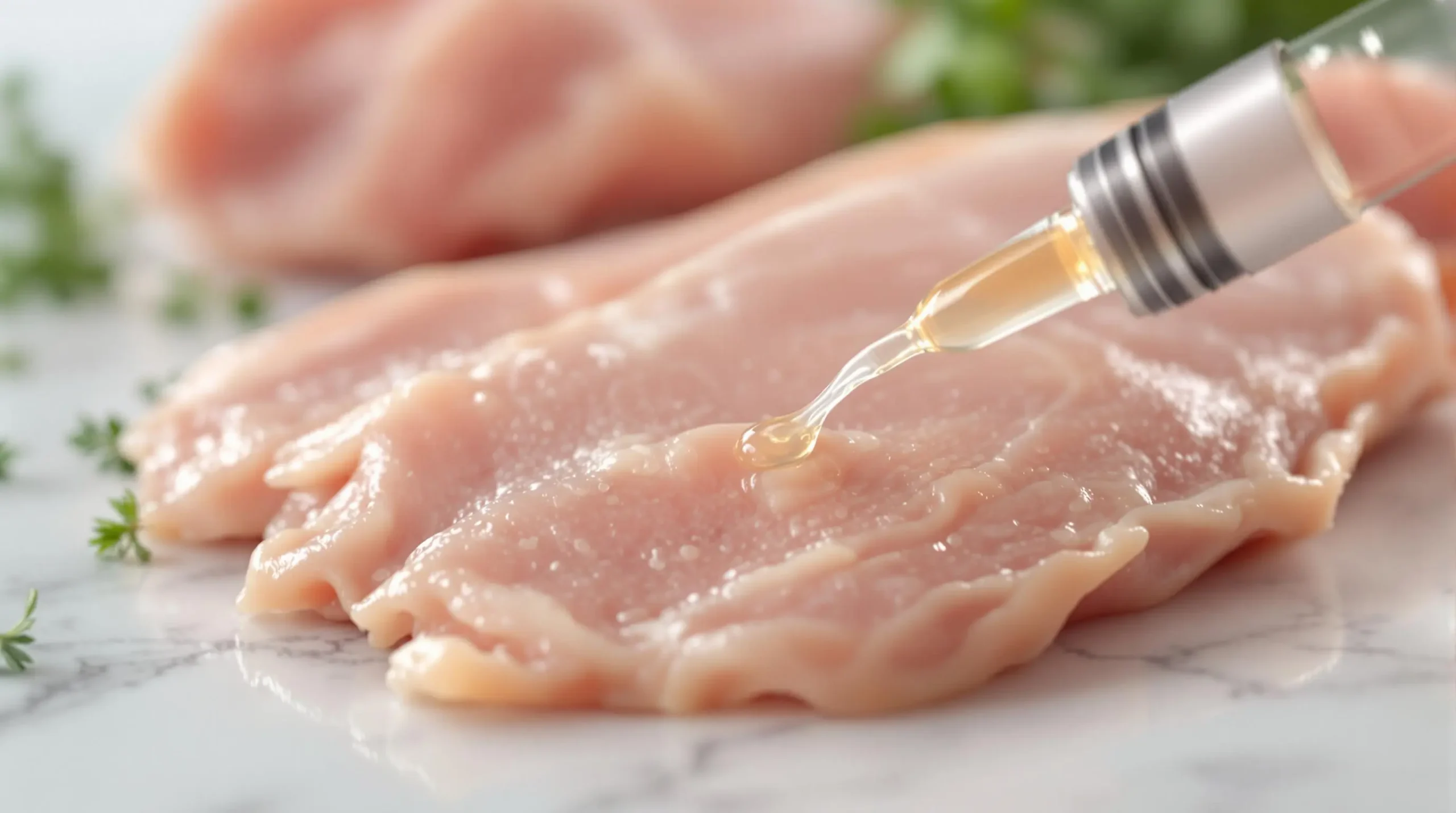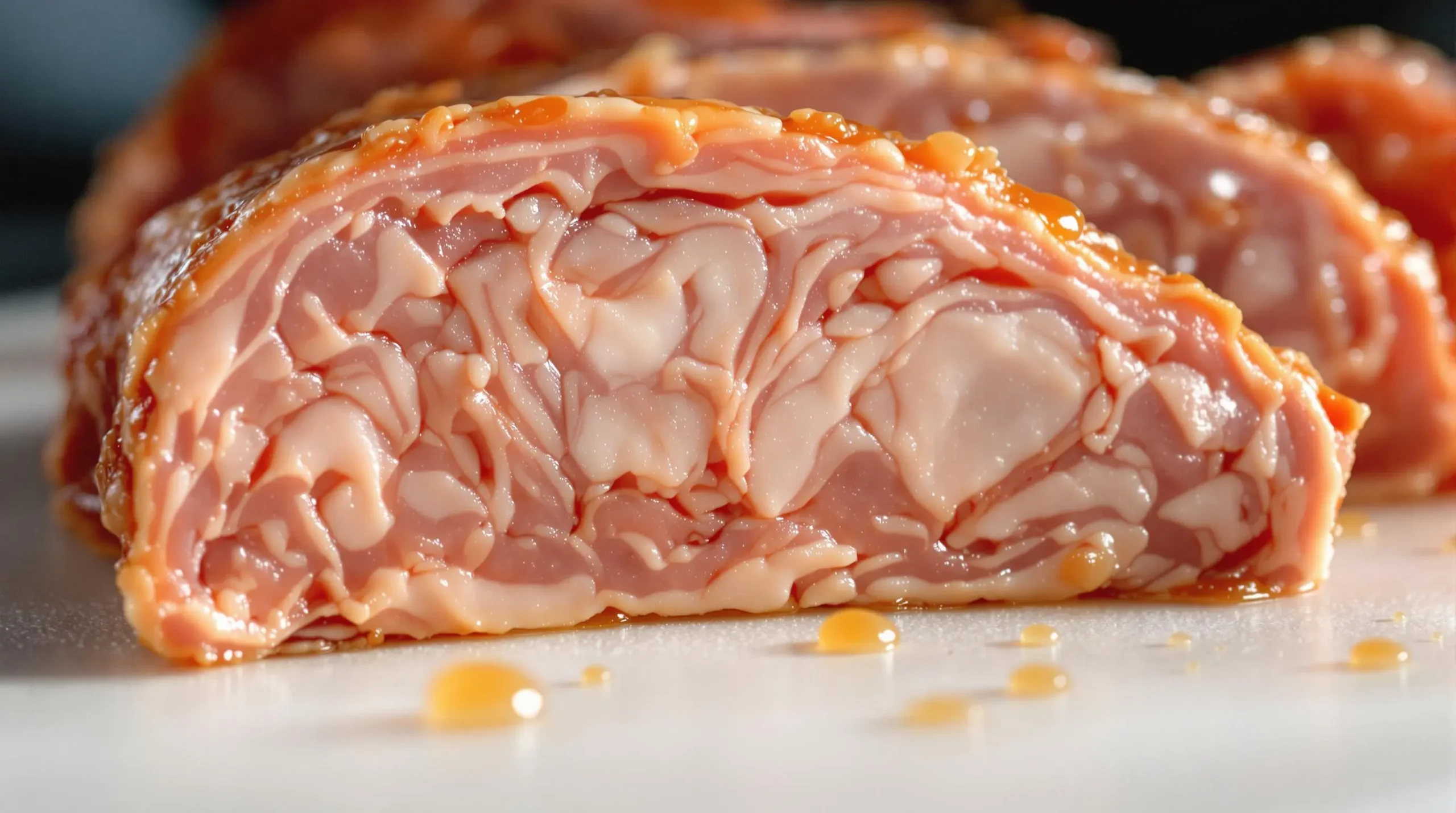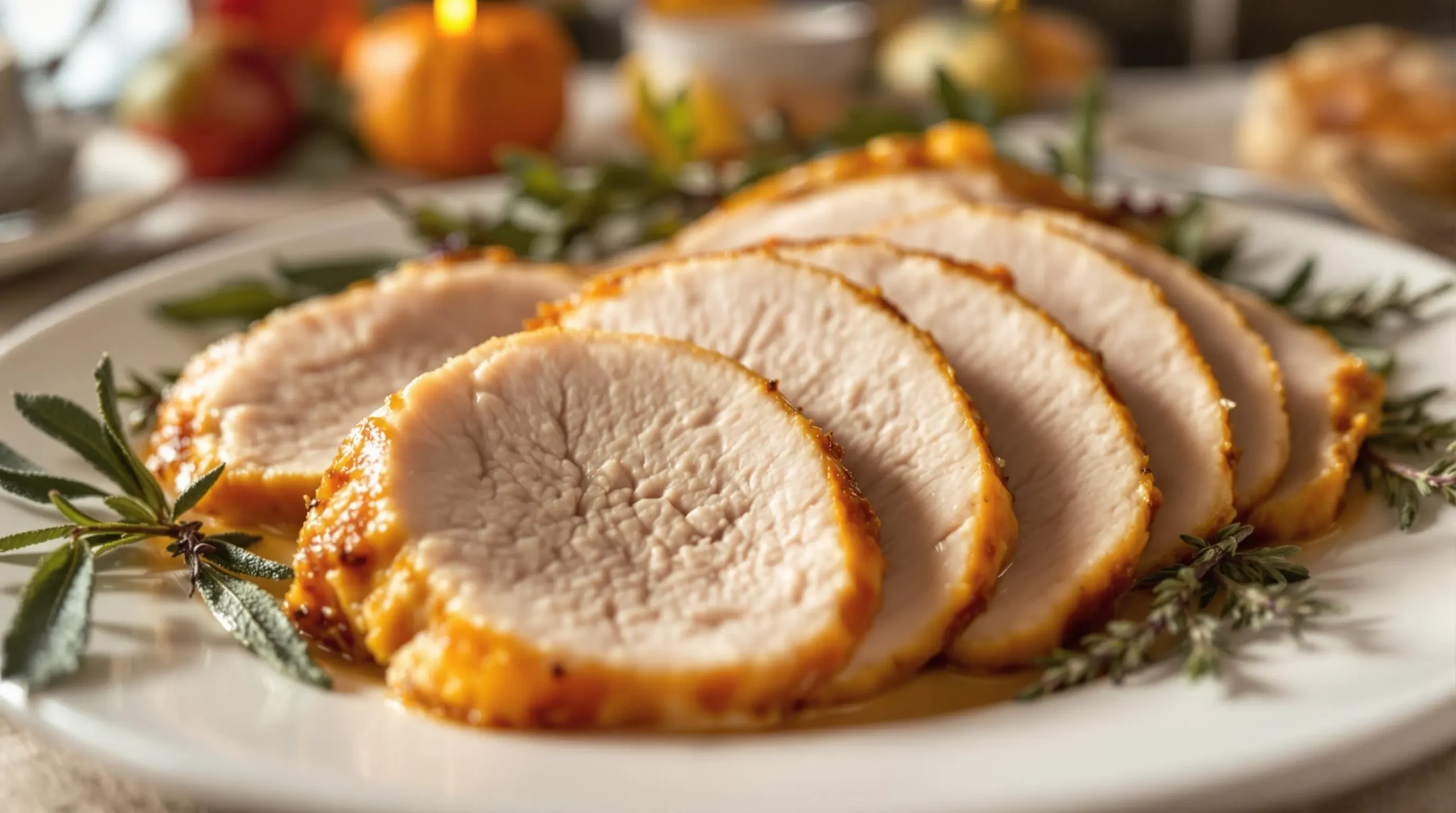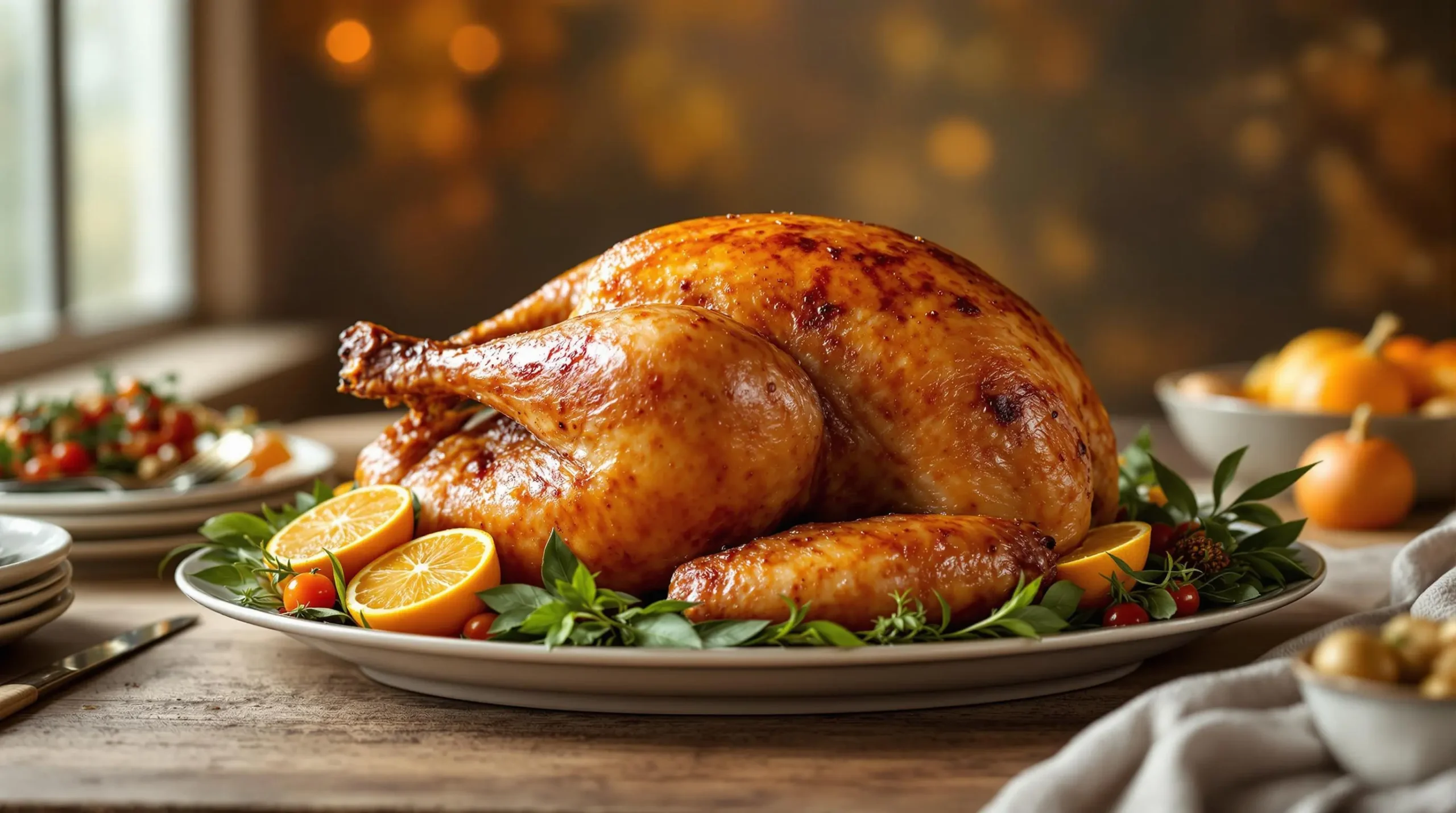Transform Your Holiday Turkey with Perfect Injection Recipes
Are you tired of serving dry, lackluster turkey at your family gatherings? A well-crafted turkey injection recipe can transform your bird from ordinary to extraordinary, infusing it with rich flavors and ensuring moisture in every bite. Whether you’re planning to use a classic butter and herb mixture or an adventurous Cajun-style turkey injection recipe, this technique can take your holiday centerpiece to the next level.
Unlike traditional brining that requires days of preparation, injection methods deliver immediate results by placing flavors directly into the meat. Moreover, this technique allows you to customize the taste profile while maintaining the turkey’s natural texture. By mastering these injection methods, you’ll discover how simple it can be to create a memorable dining experience for your guests.
In this comprehensive guide, you’ll learn everything needed to perfect your turkey injection technique. We’ll explore the essential equipment required for successful injection, step-by-step instructions for proper technique, and troubleshooting tips to avoid common pitfalls. Additionally, you’ll discover a variety of tested recipes that cater to different taste preferences, from traditional herb-infused options to bold, spicy combinations.
Get ready to dive into the world of turkey injection as we cover the basics of equipment selection, proper injection techniques, and our favorite tried-and-tested recipes. Whether you’re a first-time turkey chef or a seasoned home cook looking to upgrade your skills, these methods will help you achieve consistently juicy, flavorful results.
Let’s start by gathering the essential tools you’ll need for successful turkey injection…
Understanding Turkey Injection Basics
Successfully executing a turkey injection recipe starts with understanding the fundamental elements that make this technique so effective. Let’s explore the essential components that will help you achieve the perfect injected turkey.
Equipment Needed
First and foremost, you’ll need the right tools to properly implement your turkey injection recipe. A quality injector is the cornerstone of this method. While budget-friendly plastic injectors can work for occasional use, investing in a premium stainless steel model offers better durability and control. Look for models with multiple needle sizes to accommodate different injection mixtures.
Essential equipment includes:
- Meat injector with various needle tips
- Large preparation tray or pan
- Fine-mesh strainer
- Measuring cups and spoons
- Airtight storage containers
- Clean kitchen towels or paper towels
Benefits vs Other Methods
When compared to traditional methods, turkey injection offers several distinct advantages. Unlike brining, which requires significant refrigerator space and 24-48 hours of preparation time, injection can be completed in minutes. Additionally, your turkey injection recipe delivers flavors directly into the meat rather than just seasoning the surface.
Key advantages include:
- Immediate flavor penetration
- Less preparation time
- Minimal space requirements
- Precise control over seasoning
- Better moisture retention in specific areas
Moreover, injection surpasses conventional marinades by allowing you to target specific areas of the turkey, ensuring even distribution of flavors throughout larger cuts of meat.
Timing and Planning
Proper timing is crucial for optimal results. Generally, you should inject your turkey 12-24 hours before cooking, allowing the flavors to distribute evenly throughout the meat. However, if you’re short on time, injecting just before cooking can still yield impressive results.
Important timing considerations:
- Inject thawed turkey at least 2 hours before cooking
- Store injected turkey at safe refrigeration temperatures (40°F or below)
- Remove from refrigerator 30-60 minutes before cooking
- Plan for proper defrosting time if using frozen turkey

Furthermore, when storing your injected turkey, place it in a container large enough to catch any potential leakage. Position the bird breast-side up to allow the injection mixture to distribute naturally through the meat fibers.
By following these basic principles and using the right equipment, you’ll be well-prepared to create a memorably moist and flavorful turkey. Remember that practice makes perfect, and don’t be afraid to experiment with different injection locations and recipes to find what works best for your taste preferences.
In the next section, we’ll explore specific injection techniques and placement strategies to ensure you get the most out of your chosen recipe.
Creating the Perfect Turkey Injection Recipe
Building on our fundamental understanding, let’s explore how to create the ideal turkey injection recipe that will enhance your bird’s flavor profile. The key to success lies in selecting the right combination of liquids and seasonings while maintaining proper consistency for smooth injection.
Base Liquid Options
The foundation of any successful turkey injection recipe starts with choosing the right base liquid. These options serve as carriers for your seasonings and contribute significantly to the final flavor.
- Chicken or turkey broth for traditional flavor
- Vegetable stock for lighter taste
- Melted butter for richness
- Neutral oils for moisture
- Apple juice for subtle sweetness
When deciding between butter and oil, consider that while melted butter offers superior flavor, it must be kept warm to prevent clogging. Alternatively, oil-based mixtures remain liquid at refrigeration temperatures, making them more practical for advance preparation.
Seasoning and Flavoring
The proper balance of seasonings transforms a basic injection mixture into a flavor powerhouse. However, it’s crucial to consider particle size when adding spices to prevent needle blockage.
- Dissolve salt completely before injecting
- Strain mixtures containing herbs
- Use powdered spices instead of whole
- Mix thoroughly until all ingredients combine
- Test the mixture through your needle before starting
Moreover, fresh herbs should be finely minced or strained out, as larger pieces can clog even wide-gauge needles. For optimal results, consider using concentrated flavor extracts or essential oils when available.
Popular Flavor Combinations
While experimentation is encouraged, certain classic combinations have stood the test of time. These tried-and-true profiles provide excellent starting points for your own turkey injection recipe creations.
Favorite combinations include:
Traditional Herb Butter:
- Melted butter
- Garlic powder
- Dried herbs (thyme, sage, rosemary)
- Fine sea salt
Zesty Cajun Style:
- Liquid crab boil
- Hot sauce
- Worcestershire sauce
- Creole seasoning
Sweet and Savory:
- Apple juice base
- Maple syrup
- Brown sugar
- Black pepper
- Onion powder
Furthermore, you can customize these basic recipes by adjusting seasoning levels or incorporating your favorite flavors. Just remember to maintain proper liquid consistency and strain any solid particles that might cause injection problems.
Each of these combinations offers unique characteristics that can complement your cooking method and personal taste preferences. In the following section, we’ll explore specific techniques for applying these mixtures effectively throughout your turkey.
Injection Techniques and Tips
Mastering the proper technique for your turkey injection recipe is just as crucial as selecting the right ingredients. Let’s explore the essential methods and common pitfalls to ensure your turkey turns out perfectly every time.
Proper Injection Method
The success of your turkey injection recipe largely depends on targeting the right areas and using proper technique. Start by identifying the key injection points that will distribute flavor throughout the meat effectively.
- Breast meat (inject at multiple angles)
- Thigh muscles (avoid hitting bone)
- Drumsticks (work from top to bottom)
- Wing joints (use caution near bones)
When injecting, insert the needle at a 45-degree angle and slowly withdraw while dispensing the mixture. This technique ensures even distribution and prevents the liquid from immediately leaking out. Additionally, space your injection points about 1 inch apart, using approximately 1-2 ounces of mixture per pound of turkey.
Common Mistakes to Avoid
Even experienced cooks can encounter issues when implementing a new turkey injection recipe. Understanding these common problems helps prevent disappointing results.
- Injecting too quickly, causing liquid pooling
- Using mixtures with large particles
- Failing to maintain proper temperature
- Injecting directly into fat layers
- Cross-contamination during preparation
Furthermore, always clean your injector thoroughly between uses and avoid reusing any mixture that has contacted raw poultry. Store prepared injection mixtures separately from those already used in the turkey.

Complementary Techniques
While injection alone can produce excellent results, combining it with other methods can elevate your turkey even further. Consider these additional techniques to enhance your results.
- Apply dry rubs after injection
- Brush with oil or butter before cooking
- Baste periodically during cooking
- Allow proper resting time (20-30 minutes)
- Consider aromatics in the cavity
Moreover, if using both injection and dry rubs, reduce the salt content in your rub since the injection already provides internal seasoning. Also, remember that proper resting time allows the meat fibers to reabsorb juices, resulting in a moister final product.
When planning your cooking strategy, allow the injected turkey to rest in the refrigerator for at least 2 hours before cooking. This rest period gives the flavors time to distribute evenly throughout the meat. Subsequently, letting the turkey come to room temperature for 30-60 minutes before cooking promotes even heat distribution during the cooking process.
By following these techniques and avoiding common pitfalls, you’ll be well-equipped to create a memorable holiday centerpiece. Remember that practice makes perfect, and don’t be afraid to adjust your approach based on your experiences and preferences.
Frequently Asked Questions About Turkey Injection Recipes
After exploring various turkey injection recipe techniques and methods, you might still have some questions. Here are the most common inquiries we receive about turkey injection, along with clear, practical answers to help you succeed.
Can I combine injection with brining?
While both methods can enhance turkey flavor individually, combining them isn’t recommended. Using both techniques can oversaturate the meat, resulting in an unpleasantly wet texture. Instead, choose one method and perfect it. Moreover, injection provides similar benefits to brining in less time.
When should I inject my turkey?
For optimal results, inject your turkey 2-24 hours before cooking. However, if you’re short on time, you can inject just before cooking. Additionally, remember to refrigerate the injected turkey until about an hour before cooking time.
Can I save and reuse leftover injection mixture?
Never reuse injection mixture that has come into contact with raw poultry. Furthermore, always prepare fresh mixture for each turkey to ensure food safety. You can, however, store unused portions that haven’t touched the meat in an airtight container for future use.
Will my turkey injection recipe make the meat too salty?
Not if properly seasoned. The key is balancing your ingredients and testing the mixture before injecting. Besides, you can always adjust salt levels to your preference. Remember to reduce salt in any additional seasonings if using a salt-containing injection.
What if my injector keeps clogging?
Strain your mixture thoroughly before using, and ensure all seasonings are completely dissolved. Additionally, warming butter-based mixtures can help prevent clogging. If problems persist, try using a larger gauge needle.
How much injection mixture should I use?
Plan on using approximately 1-2 ounces of mixture per pound of turkey. Consequently, a 15-pound turkey would need 15-30 ounces of injection mixture. However, adjust this amount based on the size and thickness of specific areas.
Can I inject a frozen turkey?
Always thaw your turkey completely before injecting. Subsequently, ensure the meat reaches a safe temperature throughout before applying any injection mixture. This approach guarantees even distribution of flavors and proper food safety.
These answers should help you navigate common challenges when preparing your turkey injection recipe. Remember that practice and patience will lead to better results with each attempt.
Conclusion: Mastering Your Turkey Injection Recipe Success
After exploring the comprehensive world of turkey injection, you’re now equipped with the knowledge and techniques needed to create a showstopping holiday centerpiece. A well-executed turkey injection recipe can truly transform an ordinary bird into an extraordinary feast that your guests will remember.
Let’s recap the key benefits of injection methods. Unlike traditional techniques, injection delivers immediate, concentrated flavor directly into the meat fibers. Additionally, this method saves valuable preparation time while ensuring consistent moisture throughout the bird. Furthermore, the versatility of injection allows you to customize flavors to suit any taste preference or cultural tradition.
Remember these essential points for success:
- Always maintain proper food safety practices
- Use freshly prepared injection mixtures
- Allow adequate time for flavors to distribute
- Keep equipment clean and well-maintained
- Test your mixture before full application
As you begin experimenting with your own turkey injection recipe variations, don’t be afraid to start with basic combinations and gradually work your way up to more complex flavor profiles. Moreover, keep notes about what works best for your specific needs and preferences. Subsequently, you can refine your technique with each attempt.
Most importantly, remember that perfection comes with practice. While your first injected turkey might not be flawless, each experience builds your confidence and skill. Additionally, the beauty of this method lies in its forgiving nature – even simple combinations of butter, broth, and basic seasonings can yield impressive results.

With these techniques in your culinary arsenal, you’re well-prepared to tackle your next turkey dinner with confidence. By following the guidelines we’ve discussed and maintaining attention to detail, you’ll consistently achieve flavorful, moist results that will have your guests asking for seconds.

